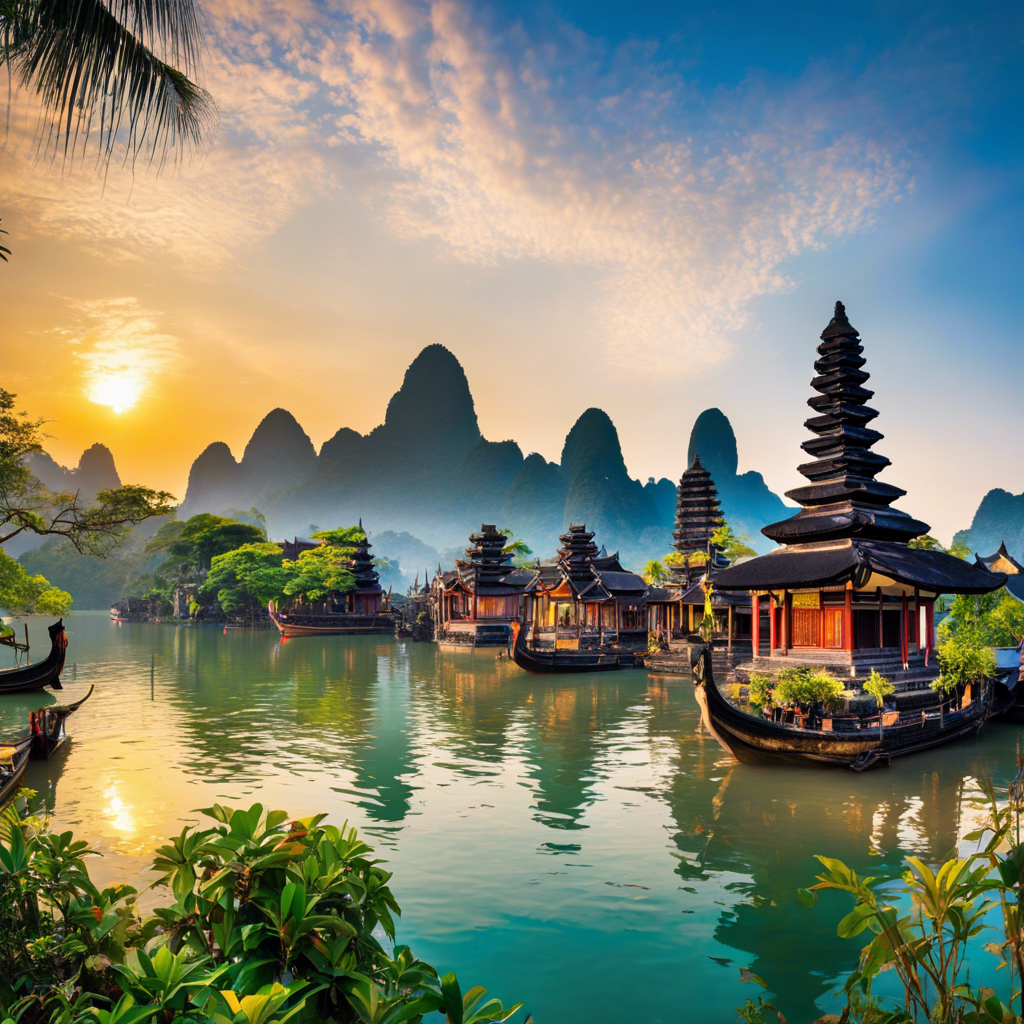Southeast Asia has long been a mecca for backpackers, offering a unique blend of rich cultural heritage, stunning natural landscapes, and bustling modern cities. With its diverse range of destinations and affordable prices, it’s no wonder that this region has become a top choice for travelers seeking adventure and immersion. So, if you’re ready to embark on the journey of a lifetime, here’s your ultimate guide to backpacking through Southeast Asia!
When it comes to accommodation, Southeast Asia offers a range of options to suit all budgets. For those seeking comfort and convenience, there are plenty of modern hotels and hostels, especially in major cities like Bangkok, Singapore, and Ho Chi Minh City. However, part of the charm of backpacking in this region is the opportunity to stay in more traditional accommodations, such as guesthouses and homestays, which offer a more authentic cultural experience and often provide a deeper connection with local communities. These options are usually more affordable and can provide a unique insight into the local way of life.
Transportation in Southeast Asia is both affordable and varied. In many cities, you’ll find an efficient and cheap public transport system, including buses and trains, which can easily get you from one place to another. For longer distance travel, night buses and trains are a popular choice, offering a comfortable way to cover large distances while saving on accommodation costs. Alternatively, low-cost airlines like AirAsia provide a quick and convenient way to hop between countries, with flights often costing as little as a bus or train journey. For those who prefer a more scenic route, boat trips are also an option, with journeys along the Mekong River or between the many islands of Indonesia providing a unique perspective on the region’s beauty.
Food is an integral part of the Southeast Asian travel experience, and the region’s diverse cuisines offer a delightful array of flavors and aromas to tantalize your taste buds. From the spicy curries of Thailand to the fragrant noodle soups of Vietnam and the savory satays of Indonesia, each country boasts a unique culinary heritage that reflects its history and cultural influences. The best part? Eating local is incredibly affordable, with street food and small family-run restaurants offering delicious meals at a fraction of the cost of Western food. Whether you’re sitting on a tiny plastic stool slurping pho in Hanoi or feasting on a banana leaf meal in Malaysia, dining in Southeast Asia is an experience that will leave a lasting impression.
Southeast Asia is blessed with an abundance of natural beauty, from lush rainforests to pristine beaches and majestic mountains. For nature lovers, there are countless opportunities to explore national parks, go trekking, and discover breathtaking waterfalls and hot springs. The region is also a diver’s paradise, with popular sites in Thailand, Indonesia, and the Philippines offering the chance to explore vibrant coral reefs and encounter an array of marine life. Whether you’re snorkeling off the coast of Borneo or hiking through the jungles of Laos, you’ll be constantly amazed by the natural wonders that Southeast Asia has to offer.
In addition to its natural attractions, Southeast Asia is also home to a wealth of cultural and historical sites. The ancient temples of Angkor Wat in Cambodia are a must-see, while the bustling cities of Bangkok and Singapore offer a fascinating mix of modern attractions and traditional cultural experiences. In Vietnam, you can explore UNESCO World Heritage sites like the Imperial City of Hue and the ancient town of Hoi An, while in Indonesia, you can discover the majestic Borobudur Temple, the world’s largest Buddhist monument. Each country in the region boasts its own unique heritage, providing endless opportunities for cultural immersion and discovery.
Part of the fun of backpacking is the opportunity to meet fellow travelers and share stories and experiences. Southeast Asia, with its well-established backpacker trail, offers a range of social activities and events that bring travelers together. Whether it’s joining a pub crawl in Bangkok’s famous Khao San Road, taking part in a full moon party on a beach in Thailand, or simply socializing in a hostel common room, there are plenty of chances to make new friends and create lasting memories together. Many hostels also offer group activities and tours, providing a built-in community for solo travelers or those looking to explore with a group dynamic.
Backpacking through Southeast Asia offers the opportunity to immerse yourself in the local way of life and connect with communities. One of the best ways to do this is by participating in local activities and events, whether it’s joining a cooking class to learn how to make your favorite Thai dish or volunteering with a local organization to give back to the community. Many travelers also choose to take language classes, providing an opportunity to not only learn a new skill but also to engage with locals on a deeper level. These experiences not only enhance your understanding of the region but also create lasting memories and connections that embody the spirit of backpacking.
When planning your backpacking trip to Southeast Asia, it’s important to be mindful of the region’s diverse range of climates and plan your itinerary accordingly. Generally, the region can be divided into three main climate zones: tropical, dry, and mountainous. Tropical areas, such as Thailand, Indonesia, and the Philippines, tend to have hot and humid weather year-round, with short, sharp rain showers. The dry zone, which includes countries like Cambodia and Laos, experiences distinct wet and dry seasons, with the dry season offering the best time for sightseeing. Mountainous areas, such as northern Vietnam and parts of Myanmar, have cooler temperatures and can get quite cold at higher altitudes, so be sure to pack accordingly if you’re heading to these regions.
